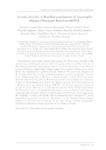Por favor, use este identificador para citar o enlazar este ítem:
http://www.alice.cnptia.embrapa.br/alice/handle/doc/1062722Registro completo de metadatos
| Campo DC | Valor | Lengua/Idioma |
|---|---|---|
| dc.contributor.author | SILVA, J. G. | pt_BR |
| dc.contributor.author | PASSOS, J. F. | pt_BR |
| dc.contributor.author | BAIA, D. | pt_BR |
| dc.contributor.author | ADAIME, R. | pt_BR |
| dc.contributor.author | LIMA, K. | pt_BR |
| dc.contributor.author | ZUCCHI, R. A. | pt_BR |
| dc.contributor.author | RONCHI-TELES, B. | pt_BR |
| dc.contributor.author | RUIZ-ARCE, R. | pt_BR |
| dc.contributor.author | BARR, N. B. | pt_BR |
| dc.contributor.author | MCPHERON, B. A. | pt_BR |
| dc.contributor.author | ARAÚJO, E. | pt_BR |
| dc.date.accessioned | 2017-02-03T11:11:11Z | pt_BR |
| dc.date.available | 2017-02-03T11:11:11Z | pt_BR |
| dc.date.created | 2017-02-03 | pt_BR |
| dc.date.issued | 2016 | pt_BR |
| dc.identifier.citation | In: MEETING OF THE TEPHRITID WORKERS OF THE WESTERN HEMISPHERE, 9th., 2016. Buenos Aires. Book of Abstracts... [Buenos Aires: FAO: AIEA, 2016]. p. 199. | pt_BR |
| dc.identifier.uri | http://www.alice.cnptia.embrapa.br/alice/handle/doc/1062722 | pt_BR |
| dc.description | Anastrepha obliqua (Macquart), the West Indian fruit fly, is the second most polyphagous species within the genus in Brazil and therefore one of the most economically important pest species. It infests an extensive range of hosts, at least 60 species. Anastrepha obliqua ranges from northern Mexico to southern Brazil also including the Caribbean Islands. Methods: We sequenced a fragment of the mitochondrial gene COI to estimate population structure and genetic diversity of A. obliqua geographic collections in Brazil. Results: A total of 153 specimens from the Amazon Forest, Atlantic Rainforest, Cerrado, and Caatinga were analyzed. A total of 20 haplotypes were found. The highest diversity levels were observed in collections from the Amazon Forest. AMOVA and Fst tests showed evidence of genetic structure allowing us to delineate two groups of A. obliqua populations. The Mantel tests were not significant indicating a weak correlation between genetic and geographic distances. Mismatch distributions and Neutrality Tests suggest that the Caatinga, Cerrado and Atlantic Forest populations have experienced a recent population expansion. Conclusion: Populations in the Amazon Forest showed high genetic diversity when compared to the other biomes and the demographic parameters indicated a recent expansion of A. obliqua in Brazil. | pt_BR |
| dc.language.iso | eng | eng |
| dc.rights | openAccess | eng |
| dc.subject | Plant pest | pt_BR |
| dc.subject | Mosca da fruta | pt_BR |
| dc.subject | Fruit fly | pt_BR |
| dc.subject | Genetic variability | pt_BR |
| dc.title | Genetic diversity in Brazilian populations of Anastrepha obliqua (Macquart) based on mtDNA. | pt_BR |
| dc.type | Resumo em anais e proceedings | pt_BR |
| dc.date.updated | 2017-02-13T11:11:11Z | pt_BR |
| dc.subject.thesagro | Praga de planta | pt_BR |
| dc.subject.thesagro | Variação genética | pt_BR |
| riaa.ainfo.id | 1062722 | pt_BR |
| riaa.ainfo.lastupdate | 2017-02-13 | pt_BR |
| dc.contributor.institution | JANISETE DOMES SILVA, UESC; JOSEANE FERNANDA PASSOS, UESC; DANILO BAIA, UNIFAP; RICARDO ADAIME DA SILVA, CPAF-AP; KÁTIA LIMA, UESC; ROBERTO ANTONIO ZUCCHI, ESALQ/USP; BEATRIZ RONCHI-TELES, INPA; RAUL RUIZ-ARCE, USDA; NORMAN B. BARR, USDA; BRUCE A. MCPHERON, OSU; ELTON ARAÚJO, UFERSA. | pt_BR |
| Aparece en las colecciones: | Resumo em anais de congresso (CPAF-AP)  | |
Ficheros en este ítem:
| Fichero | Descripción | Tamaño | Formato | |
|---|---|---|---|---|
| CPAFAP2016GeneticdiversityinBrazilianpopulations.pdf | 53.13 kB | Adobe PDF |  Visualizar/Abrir |









